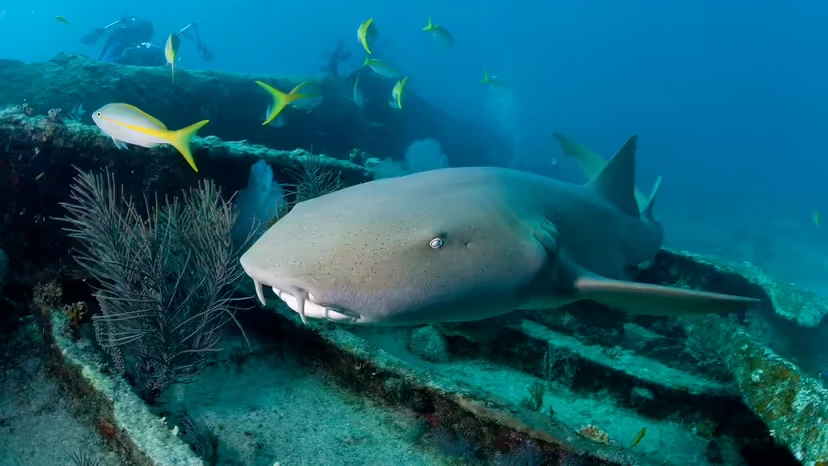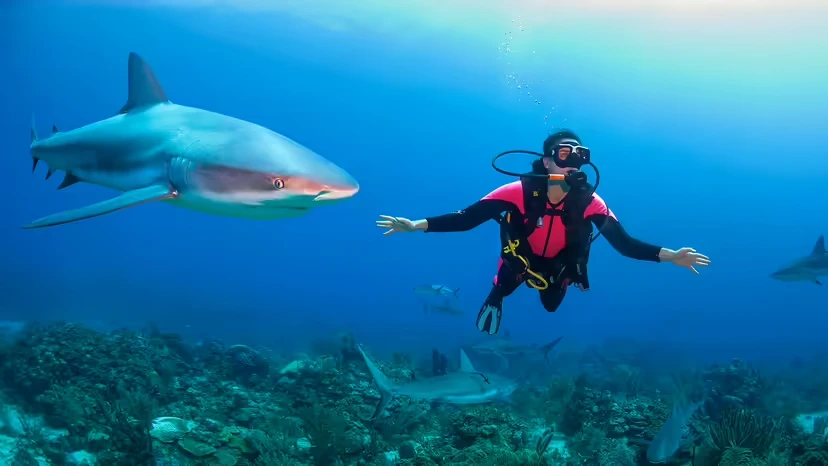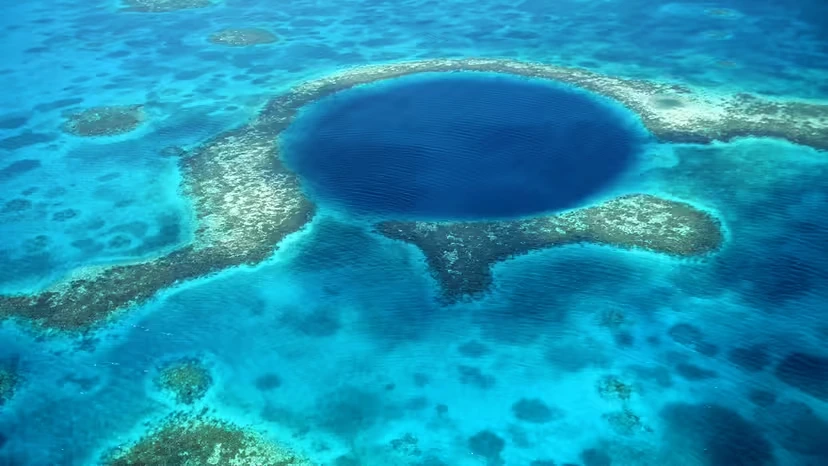TL;DR: Diving and snorkeling in Belize are still world-class, and shark bites remain very rare. Risk spikes around spearfishing, baiting/feeding, carrying catch, and crowded hotspots. Skip feeding, skip spearfishing on rec trips, stay in groups, and follow local rules—you’ll push risk back to near-baseline.

Higher-risk situations: Spearfishing (blood/struggle cues), baited/feeding dives, carrying catch back to the boat, night/low-viz, heavy surface splashing.
Most-seen species: Nurse sharks (typically docile), reef sharks (Caribbean/gray/blacktip), and occasional bull sharks (more assertive).
Typical sites: The Blue Hole, Half Moon Caye area, Ambergris Caye outer reef drop-offs and channels.
Risk control: Book no-feeding/no-chumming operators → avoid “shark feeding” tours → dive/snorkel in groups → calm entries/exits and smooth finning.
A highly publicized Half Moon Caye day trip ended in severe injury to a teen diver, prompting investigations and safety reviews. Cases like this are exceptional, but they highlight two truths:
Human cues (blood, fish remains, feeding) can flip otherwise indifferent sharks into competitive feeding behavior.
Popular sites demand tighter guide protocols and better visitor choices.

| Species | Typical Demeanor | Where You See Them | Relative Risk | What Elevates Risk |
|---|---|---|---|---|
| Nurse shark | Usually calm, bottom-oriented | Very common at snorkel stops | Low | Hand-feeding, close competition for food, crowding |
| Reef sharks (Caribbean/gray/blacktip) | Wary, territorial | Outer reef, walls, passes | Low–Moderate | Spearfishing, blood in water, chasing bait balls |
| Bull shark | More assertive; turbid-water tolerant | Uncommon | Moderate–Higher | Blood/viscosity + nearshore bait sources |
Context matters: Most Belize dives happen with no incidents. Risk is strongly behavior- and context-dependent.
Lower Risk: Daylight, clear viz, no feeding, no catch on divers.
Moderate: Dusk/night, low viz/strong current, active predation around bait balls, photographers crowding hunting fish.
Higher: Spearfishing (especially towing catch), baited/feeding dives, mixed groups where some are hunting and others are sightseeing in the same water.
Yes. Hundreds of thousands of dives and snorkels occur here with vanishingly few bites. Treat it like hiking in bear country or swimming where jellies exist: follow protocols, choose reputable operators, and respect wildlife boundaries.
No feeding/no chumming policy in writing.
No spearfishing on rec boats; if hunting, keep it separate—catch bagged and immediately back to the boat.
Safety brief includes shark etiquette, lost-buddy, bleeding control.
Guide ratios: Open water ≤ 6:1; for walls/strong current ≤ 4–5:1.
Kit on board: Pressure dressings, tourniquet, saline/clean water, PPE, emergency O₂, comms.
Do
Stay with your buddy and close to the guide.
Keep movements smooth and compact; streamline cameras/arms.
If fish suddenly scatter or you hear rapid “crunch” feeding, reduce disturbance, tuck near structure, or exit calmly.
On night/low-viz dives, angle lights downward, not in eyes/mouths.
Don’t
No feeding, no chumming, no “shark-petting.”
Don’t tow bleeding catch or discard fish remains among snorkelers/divers.
Don’t chase, block, or touch sharks; no riding nurse sharks (dangerous and illegal).
Don’t thrash on the surface—avoid the “injured prey” signal.

In-water
Maintain buddy/guide contact; move calmly to the boat or lee of reef.
For bleeding limbs: elevate and compress with a hand or band.
On the boat
Direct pressure with thick pads + elastic wrap; apply tourniquet for severe limb bleeding (note time).
Irrigate wounds with clean/sterile water; cover with sterile dressing.
Warmth, fluids, O₂ (if available).
Evacuate promptly; notify clinic/hospital and monitor for shock or allergic reactions.
Recommended boat kit: Pressure dressings, elastic bandage, tourniquet, sterile water/saline, gauze, gloves, survival blanket, radio/sat comms, emergency O₂.
Season: Dry season (≈ Nov–May) = steadier viz; wet season has fewer crowds but variable clarity.
Weather & tides: Outer reef/Blue Hole can be wind- and swell-sensitive—pick good windows.
Insurance: Get dive-specific medical/evac coverage; keep receipts/itineraries.
Reef-safe habits: Use reef-safe sunscreen, no touching coral or wildlife, snacks back on the boat.
Is the Blue Hole uniquely risky for sharks?
Not particularly. The main challenges are depth, gas loading, light, and navigation. Follow training limits and ascent control; shark interactions are not the primary hazard.
Aren’t nurse sharks “safe”? Why do bites happen?
Feeding/competition and crowding at the surface can trigger accidental bites. Don’t feed; don’t touch.
Will my action camera attract sharks?
The camera won’t—your behavior might. Avoid chasing hunting fish, strobing constantly, or splashing.
Belize’s reefs are absolutely worth the trip. Keep the boundaries clear—no blood, no bait, no bravado—and you’ll leave the rare headline events to the news while you keep the unforgettable reef memories for yourself.
animal tags: belize shark attacks
We created this article in conjunction with AI technology, then made sure it was fact-checked and edited by a Animals Top editor.